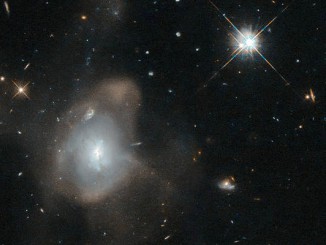Thousands of years ago, a flash of light reached Earth, a beacon heralding the death throes of a massive star. Located in the Large Magellanic Cloud, a companion galaxy to the Milky Way, the star left behind a huge cloud of chaotic, seemingly wispy gas, seen here in an image captured by the Hubble Space Telescope, that was blown away before and just after the sun exploded. The gas will provide the raw material for another generation of stars, mirroring the process that led to the Sun’s formation and the planets in Earth’s solar system. The doomed star’s core, meanwhile, its nuclear fuel exhausted, succumbed to gravity and collapsed on itself, likely forming a compact, spinning pulsar. A pulsar does, in fact, lurk near the supernova remnant known as DEM L 190, completing one turn on its axis every eight seconds. Boasting a magnetic field thousands of times stronger than Earth’s, the pulsar is classified as a magnetar and may well be the remnant core of the star that exploded.




